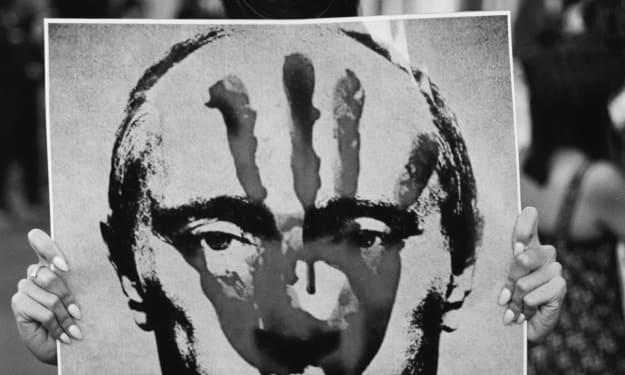
The Chola dynasty was one of the longest-ruling dynasties in the history of South India, spanning from the 9th to the 13th century CE. The Cholas were renowned for their military prowess, extensive trade networks, architectural achievements, and patronage of art and literature. Here is a brief history of the Chola dynasty:
Early Origins: The Chola dynasty's origins can be traced back to the early centuries CE. However, their rise to prominence began in the 9th century when Vijayalaya Chola established the dynasty by overthrowing the Pallava rulers. He established his capital at Thanjavur (present-day Tamil Nadu, India).
Medieval Cholas: The Chola dynasty reached its peak during the reign of Raja Raja Chola I (reigned 985-1014 CE) and his son Rajendra Chola I (reigned 1014-1044 CE). Raja Raja Chola I undertook ambitious military campaigns and expanded the empire's territory. He also commissioned the construction of the Brihadeeswarar Temple in Thanjavur, a UNESCO World Heritage site renowned for its architectural grandeur. Rajendra Chola I continued his father's conquests and extended Chola influence overseas, establishing a powerful navy and launching successful expeditions to Sri Lanka, the Maldives, and Southeast Asia.
Cultural and Economic Prosperity: The Chola period was characterized by a flourishing of art, literature, and trade. The Cholas promoted Tamil language and culture and were great patrons of literature, with notable works being produced during their reign. They also developed an extensive maritime trade network, establishing trade links with various regions, including Southeast Asia, China, and the Arab world. The Cholas' naval strength allowed them to control lucrative trade routes and accumulate considerable wealth.
Decline and Later Period: The Chola dynasty faced internal and external challenges in the 12th century, leading to a gradual decline. Continuous warfare, dynastic conflicts, and the emergence of new powers weakened the Chola empire. The Pandya and Hoysala dynasties, among others, started asserting their influence, eroding Chola authority.
Last Phase: The later Chola rulers made efforts to revive the dynasty, but they struggled to regain their earlier glory. The empire faced constant invasions and incursions by rival kingdoms and foreign powers like the Pandyas, Hoysalas, Kakatiyas, and the Delhi Sultanate. Ultimately, the Chola dynasty came to an end in the 13th century when the Pandya dynasty defeated the last Chola ruler, Rajendra Chola III, and established their dominance in South India.
Despite their eventual decline, the Chola dynasty left a lasting impact on South Indian history and culture. Their architectural marvels, including the Brihadeeswarar Temple, continue to inspire awe, and their contributions to literature and art are celebrated to this day. The Cholas' maritime exploits and trade connections laid the foundation for centuries of maritime trade in the Indian Ocean region.
Certainly! Here are a few more notable aspects of the Chola dynasty:
Administration and Governance: The Cholas were known for their efficient administrative system. They divided their empire into smaller administrative units called Nadu, which were further divided into villages. Local governance was entrusted to village assemblies and officials. The Chola rulers implemented land reforms, maintained an organized revenue system, and promoted agriculture, which contributed to the prosperity of the empire.
Temple Construction: The Chola dynasty's patronage of temple construction and renovation played a significant role in their cultural and religious influence. Apart from the Brihadeeswarar Temple, several other magnificent temples were built during their rule, displaying intricate carvings and exquisite architecture. These temples served as centers of worship, education, and cultural exchange.
Legal System and Justice: The Cholas had a well-developed legal system. They introduced a comprehensive legal code known as the "Chola Dharmashastra," which addressed various aspects of civil and criminal law, including property rights, trade regulations, and punishment for offenses. The king was the ultimate authority in delivering justice, and his court had a hierarchy of officials to handle legal matters.
Naval Power: The Cholas were renowned for their formidable naval force, which played a crucial role in their expansion and trade dominance. They built a large fleet of warships and trading vessels, establishing control over key ports and trade routes. Their maritime strength enabled them to protect their interests, conduct overseas expeditions, and foster cultural and commercial ties with other regions.
Legacy and Influence: The influence of the Cholas extended beyond their time. Their achievements in architecture, administration, and naval power left a lasting impact on subsequent South Indian dynasties. The Vijayanagara Empire and the Nayakas of Madurai drew inspiration from Chola traditions and emulated their architectural style. The Cholas' maritime trade connections also contributed to the development of a cosmopolitan culture in South India.
The Chola dynasty's history reflects a period of significant cultural, political, and economic achievements. Their contributions continue to be celebrated, and the remnants of their grandeur can still be witnessed in the temples and art they left behind. The Cholas left an indelible mark on the history of South India and continue to be revered as one of the greatest dynasties of the region.






Comments
There are no comments for this story
Be the first to respond and start the conversation.